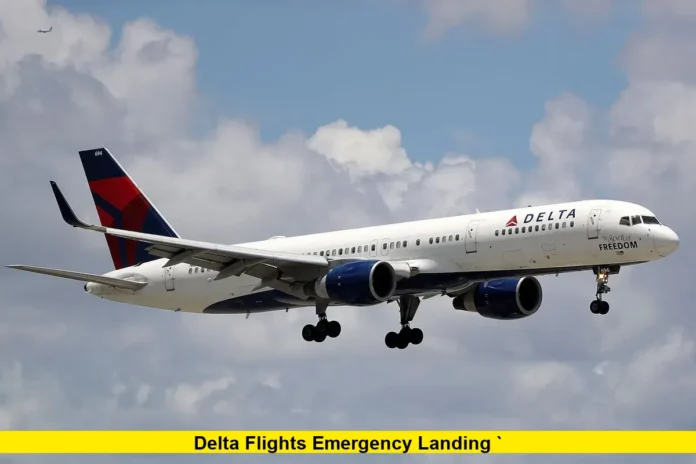Delta flights were thrust into the spotlight recently when one of their planes encountered significant turbulence, forcing an emergency landing. Flight 56, traveling from Salt Lake City to Amsterdam, faced violent air conditions that caused dozens of injuries and an unexpected diversion to Minneapolis.
About 40 minutes into the flight, passengers experienced sudden, severe turbulence. The aircraft, an Airbus A330-900neo, abruptly climbed and dropped over a thousand feet in seconds. The turbulence was so intense that many unbuckled passengers were thrown around the cabin, and service carts crashed violently. The flight crew immediately took action to stabilize the plane and communicate with air traffic control to find the safest nearby airport for landing.
The plane safely touched down in Minneapolis-Saint Paul International Airport later that evening. Emergency responders were on hand to assist, and 25 passengers and crew members were transported to local hospitals for treatment. Fortunately, there were no fatalities, but several people suffered injuries ranging from minor bruises to more serious conditions.
What Happened During the Turbulence?
- Flight details: Delta Flight 56 departed Salt Lake City for a transatlantic journey to Amsterdam with 275 passengers and 13 crew members aboard.
- Turbulence onset: Roughly 40 minutes into the flight, over Wyoming, severe turbulence hit unexpectedly, causing sudden altitude changes exceeding 1,000 feet in just seconds.
- Emergency diversion: The flight crew diverted to Minneapolis for an emergency landing, prioritizing passenger safety.
- Injuries: Twenty-five people were injured during the incident, mainly due to being unrestrained when the turbulence struck.
Why This Incident Matters
This incident highlights growing concerns about turbulence during air travel:
- Increasing turbulence risks: Changes in climate patterns and jet streams are believed to contribute to more frequent and intense turbulence events.
- Safety precautions: The importance of wearing seat belts at all times during the flight, even when the seat belt sign is off, is reinforced by incidents like this.
- Emergency response: The effective handling of the situation by Delta’s flight crew and emergency teams prevented a worse outcome.
| Aspect | Details |
|---|---|
| Flight Number | Delta Flight 56 |
| Aircraft Type | Airbus A330-900neo |
| Departure | Salt Lake City |
| Destination | Amsterdam |
| Diversion Airport | Minneapolis-Saint Paul |
| Passengers & Crew | 275 + 13 |
| Injuries Reported | 25 |
Delta’s Response and Passenger Care
Delta Airlines confirmed their commitment to passenger safety and expressed appreciation for the emergency teams that assisted upon landing. They have activated a care team to support those affected, providing assistance and updates as the situation develops.
What Passengers Should Keep in Mind
- Always keep your seat belt fastened while seated.
- Follow all crew instructions promptly.
- Be prepared for sudden changes in flight conditions, especially when crossing regions prone to storms.
Delta flights remain one of the most trusted names in air travel, but this event is a reminder that air turbulence remains an unpredictable risk. The crew’s quick decisions and emergency preparedness ensured the safe landing of Flight 56, saving lives and minimizing injuries.
Have you ever experienced turbulence like this on a flight? Share your thoughts and experiences below. Stay alert and informed as aviation safety continues to evolve.
